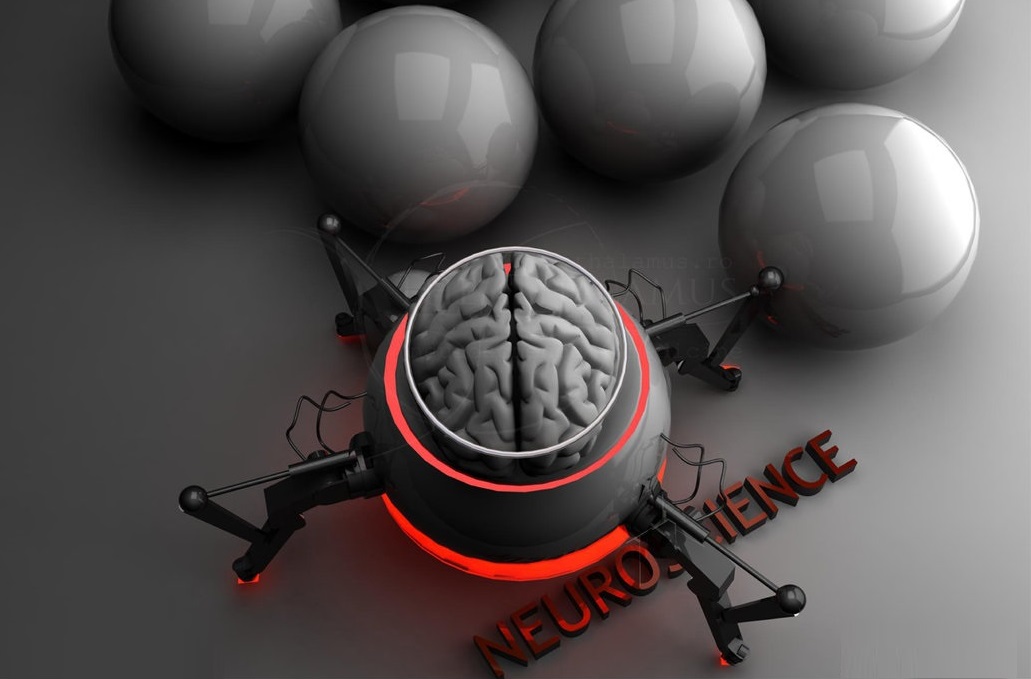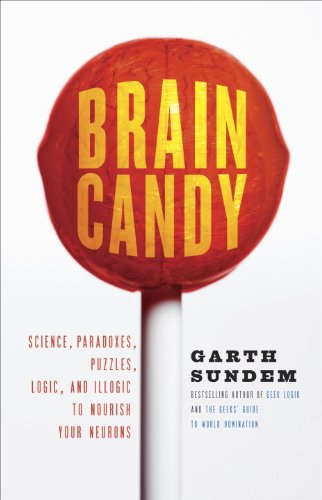Review: Brain Candy

From science writer and TED-Ed speaker Garth Sundem comes a Pandora’s box of brain taffy to stuff somewhere in your hippocampus, the bulk of which you’ll probably lose all recollection of shortly after consumption. In a quixotic attempt to ward off this neurological misdemeanor, I’ll take some moments to queue up any residual anamnesis I still have of Garth Sundem’s vat of brain confectionery.
In some ways, I enjoyed Brain Candy, but not in the ways I normally enjoy a book. Also ‘book’ is not perchance the proper term (something that would not have come as a surprise had I leafed through it pre-purchase rather than spasmodically tossing it in my Amazon shopping cart). Brain Candy is a mixed bag of trivia, brain trials, and interactive questionnaires, spiked with adages about the brain and the latest research, all divvied up into small chunks in more or less random sequence. As such, it’s more of an entertaining coffee table accoutrement, or something you’d place within short reach of the lavatory, its viscid morsels laced in such a way that you don’t linger too long.
As someone who has scoffed down every crumb tucked between the bindings, I can say it’s meant to be approached in episodes, committed to near-term memory and put aside until a later instance warrants its re-attention. The pages lurch from one topic to the next in such rapid-fire fashion that you’re forced to switch up your train of thought just as it is building speed. No need to overload your cerebrum; I’d hate to see you hopped up on all those sweets anyway. But you want more.
Surface treatment is the enemy of all enemies. And indeed, many topics simply do not sit well with this format. Dissecting the extent to which human and non-human behavior is genetic or environmentally conditioned requires more than a family of paragraphs (p. 90). Probing how human empathy is continuous with other primates and prosocial animals is not an area you can properly canvass in a sub-two-page serving (p. 149). Deconstructing addictive behavior and its underlying neural substrates does not go hand in hand with brevity (p. 125). The differential brain states of those with and without religious convictions is simply not something that can be paraphrased in a sectioned-off word salad (p. 142). Neuroethics? Free will? Don’t even bother.
Alas, this is not recommended for obsessive-compulsives or for those magnetized to detail. Yes, people like yours truly. The narrow snippets prefacing each study are embarrassingly, tantalizingly terse and frequently left me with more questions than answers. Are some people better at thought suppression than others? When interrogating a potential suspect, how does one determine what is and is not an extraneous detail? Is Mr. Sundem available for a Skype Q&A?
A soothing reprieve to the madcap formula served up here is that full citations are provided for many of the excerpts in the back of the book. If one of the topics in particular seizes your interest, you can always follow up with the original research paper. Brain Candy hence registers as a depthless collation priming you for the main entree, if you’re so inclined. Of course, there’s no reason the ADHD types won’t gobble this up. If hastily digestible chestnuts are more your speed, Brain Candy‘s a fine recipe.
There are other treats Sundem crams onto the dinner table. The book is chock full of brain teasers, psychometric and other pop-personality tests, and further topped with visual illusions and “eye hacks” that will infuriate your occipital lobe. Some of the brain teasers are worthwhile, while others barely rise to the level of time-wasters. And missing entirely is the crowning glory of all brain twisters: four men in hats. No excuse for its absence.
The optical legerdemain, moreover, consists of illusions you’ve probably seen before if you’ve had any exposure to the internet. Along the way you’ll also be forced to slurp down a glossary of phobias that I have my doubts are even real. (Automatonophobia — who knew we had created a word for people frightened by ventriloquist dummies?) Some might call much of this filler. Those people would be right. Any more, and I would have unhesitantly slapped on two stars.
Lastly, I cannot close out this review without mentioning the most savory bite in the book. Sundem enumerates a few hapless men who found themselves with nails (yes, nails) and other pointy objects lodged in their brain (p. 60). One man was found to have a two-inch nail embedded in his skull for twelve years before symptoms prompted him to consult a doctor. Another’s suicidal run-in with a nail gun backfired after having twelve nails plunged into his skull. What did he do except stroll into his local hospital complaining of a “mild headache”? Yet another nail gun incident involved a construction worker unbeknowingly firing a four-inch nail through the roof of his mouth, which penetrated clean through to the brain, stopping directly behind his right eye. The man gathered he had a toothache, which he sat on for six days before seeking help from one profoundly bemused dentist. And many of these men recovered with no neurological deficits whatsoever. Extraordinary.
Closing Thoughts
With neuroscience some twenty years or more behind genetics and other interoperable disciplines, it takes some effort to enlist the reader on an empirically sound, up-to-date voyage of the field. Brain Candy may well have been formed with other goals or target audiences in mind, and that’s fine, too. As a mere intellectual stimulant, it gets the job done.
I’m hesitant to label this ‘pop’-science, given the aforementioned citations and scholarly references abutting much of the synopses. But it sure reads like it. Sundem’s an entertaining writer, to be sure, but he leaves too much to the imagination, culminating in a book that’s long on fun and short on substance, like a hyper-condensed Radiolab podcast. There’s also a lot of dull filler that could have, to great benefit, been replaced by meatier exposés on the less permeable topics.
I’m just one taste-tester, however. If a heavily staccatoed collection of brain facts and toothsome studies, logic puzzles, and neurovisual tricks appeals to you, Brain Candy might be the perfect complement to your reading or living room décor.
Note: This review is mirrored over at Goodreads and at Amazon.
Feature image credit: Deviantart user mynorthshadow



Comments